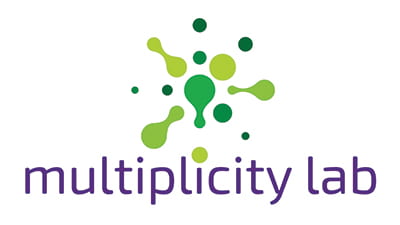Image of the Week: Comparing Pattern Blocks
December 11, 2022Comparing Pattern Blocks
A few weeks ago, we wrote about how you could promote relational reasoning by asking, Which is more? with Cuisenaire rods. This week, we ask the same question using pattern blocks. And this time we use that question to provoke thinking about equivalence. Unlike with the Cuisenaire rod image, in this week’s image, there is nothing the same on the two sides. The left side has 6 green triangles. The right side shows one red trapezoid and two blue parallelograms. So, how do we decide which is more?
While the left side has more blocks, the right side covers more area. How do we know?
Well, the key is thinking about equivalence. You can see in the image that two green triangles are equivalent to – that is, they take up the same space or area – as one blue parallelogram. So, 4 green triangles on the left are equivalent to the two blue parallelograms on the right. Setting those aside using relational reasoning, now all we need to compare is the two remaining triangles on the left to one red trapezoid, which is larger than a parallelogram. In fact, it would take 3 triangles to be equivalent to the trapezoid, so the right covers more area. Alternatively, students might simply convert the right side into triangles – 2 triangles for each parallelogram and 3 for each trapezoid – to find the value of the right is 7 triangles compared to the 6 on the left.
In tackling this kind of thinking, you can see that students are grappling with big ideas related to area and equivalence. A Which is more? activity with pattern blocks like this can be a great way to introduce or reinforce those concepts and give them names.
Just a quick note from us at multiplicity lab that we will be taking the next three weeks off for winter break. We hope teachers everywhere are able to take some much need time to recharge in the coming weeks. We’ll see you in 2023!
And we invite you to follow us on Twitter! Tweet us the fascinating ideas you students have about our activities or how you’re trying these activities in your space. We can’t wait to hear from you!
To multiplicity, cheers!
Jen Munson and the multiplicity lab group

